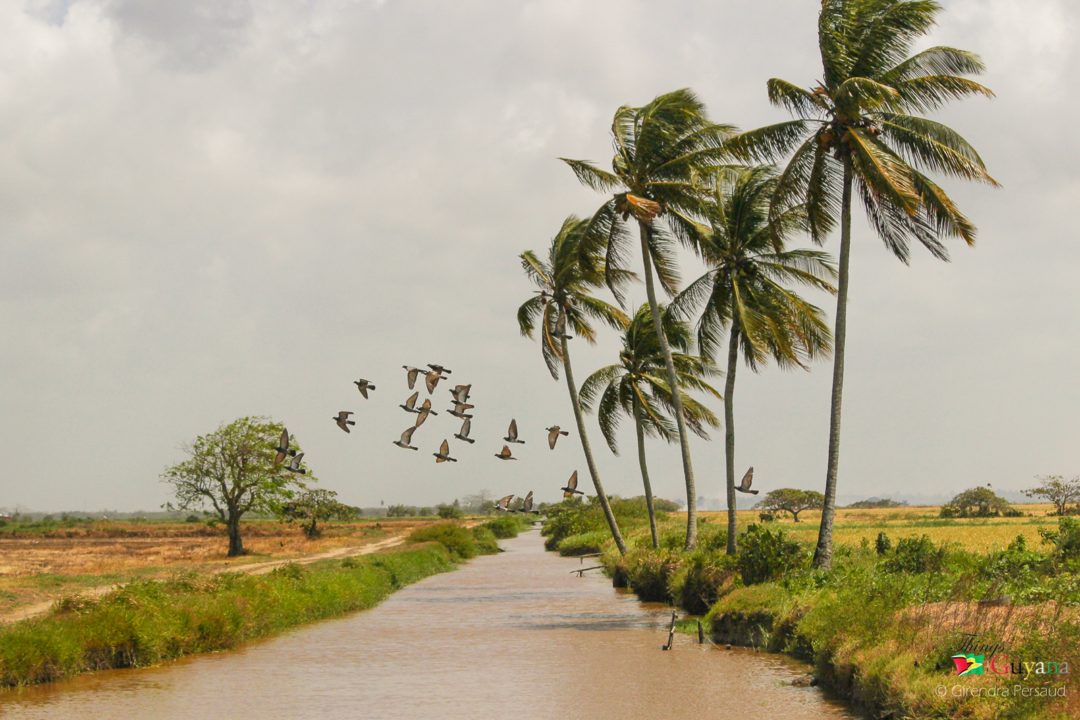
The roots of the coconut tree is very good at preventing soil erosion near trenches
It is said to be known as “the tree of life” and as “the tree of a thousand uses”. Coconut trees can be found decorating the landscape throughout Guyana and its people have made the usage an everyday part of their life. From the sweet ‘sugar cake’ to the thirst quenching coconut water, almost every part of the tree and fruit can be used. Guyanese have found a variety of ways to make use of the coconut tree and can possibly be an untapped potential to boost their economy.
On the 21st – 23rd October 2016, a Coconut Festival was held at the Arthur Chung Conference Centre. This exhibition was a collaboration between the Ministry of Business, the Department of Tourism and the Ministry of Agriculture. It was the first ever Coconut Festival held and it discussed the coconut’s nutritional value, the decorative value of the shell, tree trunk, branches and fronds, as well as the numerous ways for re-use of discarded parts.
The Coconut Industry in Guyana.
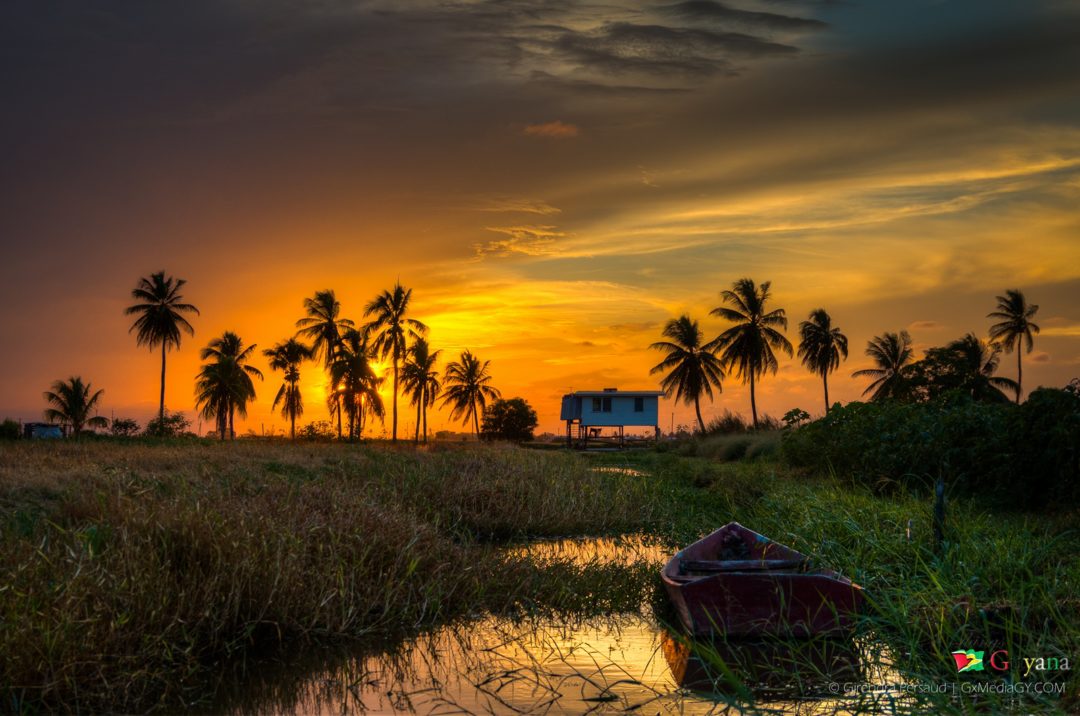
There is something nostalgic about coconut trees in against a sunset in Guyana.
Dominic Gaskin, the Minister of Business, was happy to announce Guyana’s first ever Coconut Awareness Week and Festival. He stated that the coconut has been added to Guyana’s list of tourist attractions.
The Minister identified three particular outcomes because of the Coconut Industry. The Coconut Industry can:
- Increase Guyana’s foreign earnings due to the export of coconuts and coconut products.
- Reduce spending on imported food since coconuts can be grown and consumed locally.
- Enhance the experience of visitors in Guyana, adding fun and flavor to their outdoor enjoyment.
According to the Prime Minister Moses Nagamootoo, coconut is considered a product which comes from a healthy ancestry.
Parts of the Coconut Tree and Their Usage
- Trunk of the Coconut Tree: This can be used as timber to make furniture, canoes, houses, bridges and even delightful musical instruments such as the drum.
- Roots of the Coconut Tree: The root is an important part since it has medicinal value. It can also be used as a toothbrush or mouthwash – a great tool for campers! Some people use it to make dye.
-
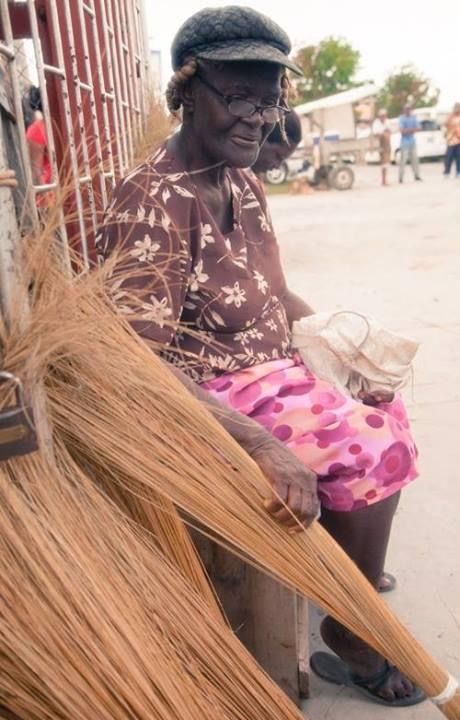
Selling brooms
Branches of the Coconut Tree: These can be used as roofing materials for houses and the ribs of the leaves can be used to make toothpicks. They are also used to make ‘pointer brooms’. The broom making business is well known throughout Guyana; usually the brooms are made by the parents and sold by their children. It is a very common sight to see children sitting on the side of the roads selling brooms. Also, many women pass around with brooms on their head sounding out a well-known call: “Broom Hay(Here)!” The leaves are also used to make mats, bags, hats, fans and baskets. These are also sold and bought by many tourists because of its beautiful, crafty look.
History of the Coconut Trees
At the Coconut Festival, 84-year-old Historian Mr. Isahack Bashir said that the Portuguese started to plant coconut and other crops in the Pomeroon in the 1840’s. In the 1920’s, Indentured laborers from the abandoned sugar plantations in Essequibo continued the process.
Did You Know?
Alfro Alfonso processed copra (dried coconut kernels) into coconut oil with the establishment of the Pomeroon Oil Mill. He also introduced a few coconut processing facilities to export coconut water locally as well as to other countries.
Fact: Pomeroon, Essequibo is the largest coconut producing area in the Caribbean.
The Coconut
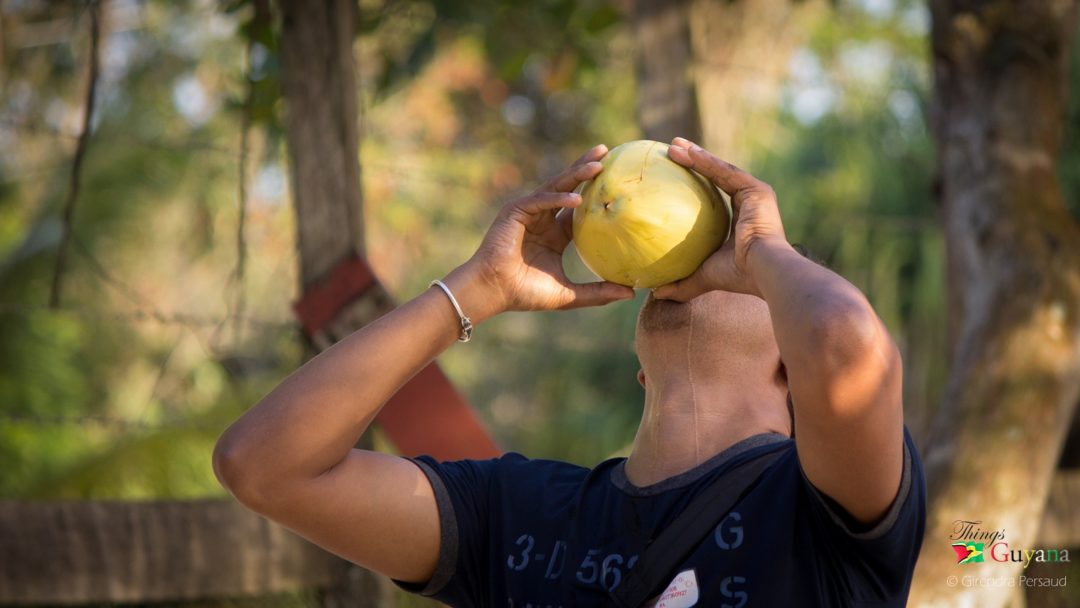
Drinking coconut water on a hot day is a Guyanese thing
The coconut tree (Cocos nucifera) is a member of the palm tree family and it is the only living species of the genus Cocos. The term “coconut” can refer to the whole coconut palm, the seed, or the fruit, which is botanically a drupe, not a nut.
This fruit of the coconut palm consist of a thick, fibrous, brown, oval husk under which there is a thin, hard shell enclosing a layer of edible white meat. The hollow center is filled with a clear sweet liquid, commonly referred to as ‘coconut water’. Coconuts take ten to twelve months to fully mature.
The coconut is made up of the coir, husk, shell, meat and water. The coir is the fiber on the outside of the husk; it is used to make ropes, mattress stuffing, brushes, sacks, caulking for boats and fishing nets. The husk can be used as a pot for plants and in cosmetics as a skin exfoliant. The husk together with the coconut shells can be used for fuel and are a source of charcoal, it can be used to buff floors and can also act as a mosquito repellant when burnt – the smoke repels the insects. The coconut shells can be used as bird feeders and the coconut itself can produce three things: 1) water 2) oil and 3) milk.
Tip: Coconut is Guyana’s main nontraditional crop as it ranks third after rice and sugar based on the amount of acreage cultivated.
The coconut is known as the ‘‘super fruit” because of its diverse benefits.
Coconut Trees in Guyana
Coconut trees have played a major role in the lives of Guyanese, in fact, a coconut tree can be found in almost every yard in the countryside. They are looked to for shade on a hot day by patrons and gives a cooling effect. Each part of the coconut tree can be used in a different way and is a valuable asset for the growth and development of Guyana. Coconut trees will remain in Guyana for as long as the people themselves live here and its economical potential keeps on increasing with each passing day.
Must Watch!!!
Danielle Hodge takes us through her journey of starting Indigenous coconut oil. She discovered her product during Guyana’s first annual coconut festival which took place October 2016.
Article References:
Coconut Festival officially opens…Coconut industry can make a great contribution –Business Minister

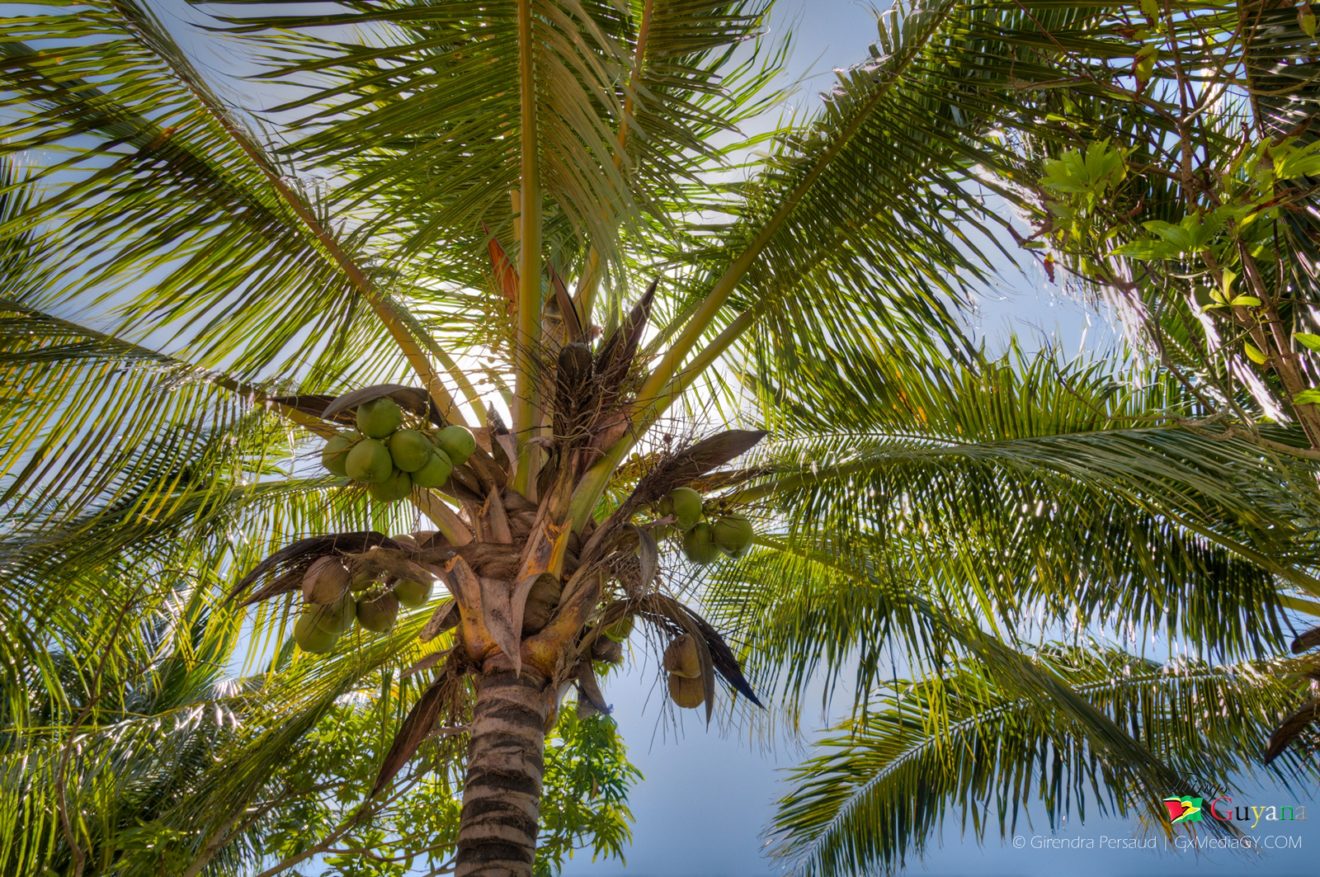






3 Comments